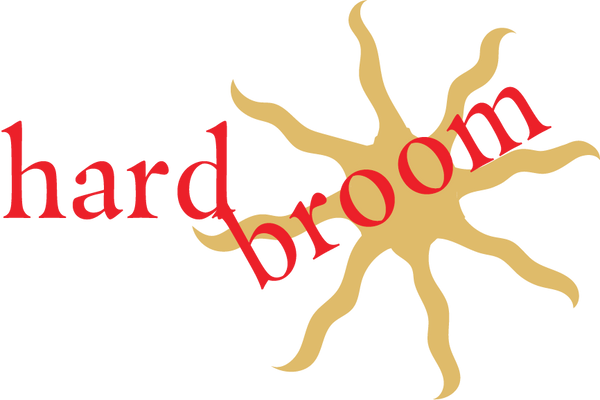
What Makes Natural Incense Burn?
Have you ever lit some incense and thought, “What am I actually burning here?”
I don’t mean the aromas listed on the box (though that’s important!). I mean—what is the physical material that’s catching flame and turning into ash?
This question is at the white hot heart of natural incense. In fact, the word ‘incense’ comes from the Latin verb ‘incendere’, which means ‘to burn’.
Two Main Types: Dipped vs. Masala
While incense comes in many styles, I find it helpful to consider two main categories:
-
Dipped incense
-
Masala incense (often called natural incense)
Let’s take a closer look at what sets them apart.
What Is Dipped Incense?

Photo licensed from Adobe Stock.
 . Photo licensed from Adobe Stock.
. Photo licensed from Adobe Stock.
Dipped incense is the most common, mass-produced type you'll find in stores.
It usually looks like charcoal sticks or compressed sawdust cones that have been chemically treated and then dipped into synthetic fragrance oil.
(Check out this blog post for more info!)
This style of incense is actually closer to scented candle-making than to traditional incense-making.
Think about it: when you light a scented candle, the flame burns the wick, which draws up wax scented with fragrance oil.The scent comes from the evaporation of that oil—not from the wax itself.
When you burn dipped incense, you’re inhaling:
-
The stick or cone’s base material (often times charcoal or sawdust)
-
Plus chemical additives and/or fragrance oils
What Is Masala (Natural) Incense?

Photo by Hard Broom. All rights reserved.
Natural incense—often called masala incense—is a completely different experience.
While there are types of natural incense that don’t require direct flame (like pellets, kyphi, or agarwood chips), most need to be directly burned.
That means you:
-
Light the tip of the stick, cone, or coil
-
Blow out the flame
-
Let the ember work its way through the incense, releasing fragrant smoke
If you’ve ever lit a sage bundle or palo santo stick, you’ve already burned natural plant material directly.
Now think about how different that is from burning a sage- or palo santo–scented candle.
Why Combustibility Matters
Because natural incense doesn’t use fire accelerants like charcoal, saltpeter, or DPG, it needs to include naturally flammable ingredients.
This brings us to the science of combustion.
Notes on Combustion
In simple terms, combustion is the process where heat, fuel, and oxygen react to create a flame.
For direct-burn incense, you need:
-
A combustible base (the fuel)
-
Oxygen
-
Enough heat to keep it going
-
AND it has to smell good!
Cheap, commercial incense uses charcoal and chemical accelerants to solve the combustion problem. Natural incense, on the other hand, relies on plant-based materials like:
-
Wood powders
-
Tree needles and leaves
-
Seed cones
(Think: a campfire—but aromatic!)
Wood Powder Bases: Trees for the Win
 Photo by Hard Broom. All rights reserved.
Photo by Hard Broom. All rights reserved.
There’s a rich variety of aromatic woods and bark used in natural incense blends.
Here are some of my favorite natural combustibles:
Tree Barks & Wood Powders
Wood bark refers to the outer layer of tree stems and roots. Common barks used in incense include:
-
Sandalwood (Southeast Asia & Australia)
-
Himalayan Cedarwood (Asia)
-
Palo Santo (Peru)
- Japanese Cypress (Japan)
I will discuss this in greater detail in a future blog post, but there are two wood powders that are used as binders, in natural incense making. This means these types of wood, when activated with water, turn into a glue-like consistency allowing the incense dough to be pliable enough to be turned into sticks, cones or coils.
These wood binders are:
-
Makko (Tabu no ki) (Southeast Asia)
- Joss Powder (Litsea glutinosa) (Vietnam)
These wood powders also have a soft, subtle fragrance that doesn’t interfere too much with the aromas of the other ingredients.
Tree Needles & Leaves
Evergreen trees offer a fragrant range of needles and leaves. Popular choices include:
-
Pine Needles (Northern Hemisphere; Worldwide)
-
Spruce Needles (Northern Hemisphere; Worldwide)
-
Juniper Tips (Northern Hemisphere; Worldwide)
-
Cedar Leaves (Lebanon, Asia, North Africa)
Cones
Did you know juniper berries aren’t actually berries, but seed cones?
It’s true—and they’re one of my go-to ingredients. I use hand-harvested juniper berries in my Juniper Berry, Bay Leaf & White Sage blend.
Why Burn Wood-Based Incense?
 Photo by Hard Broom. All rights reserved.
Photo by Hard Broom. All rights reserved.
Aside from being far better for your lung health than synthetic alternatives, natural, wood-based incense is a beautiful way to connect with the Earth.
When I light a cone of natural incense, I’m not just enjoying the aroma—I’m thinking about:
-
The trees and herbs that make up the blend
-
The ritual of burning plant material
-
The tradition and slowness it invites
It’s a grounded, intentional way to interact with the natural world. And it reminds me to pause.
Safety Practices
When burning incense, always remember the potential hazards and safety precautions that are necessary to take:
-
Never leave the incense burning unattended
-
Always burn your incense in a fire-safe dish or using an appropriate holder to avoid the risk of fire
- Keep away from children, pets or anywhere where the incense could get knocked over
- Open a window & burn the incense in a well ventilated space
- Don’t directly inhale the incense smoke
